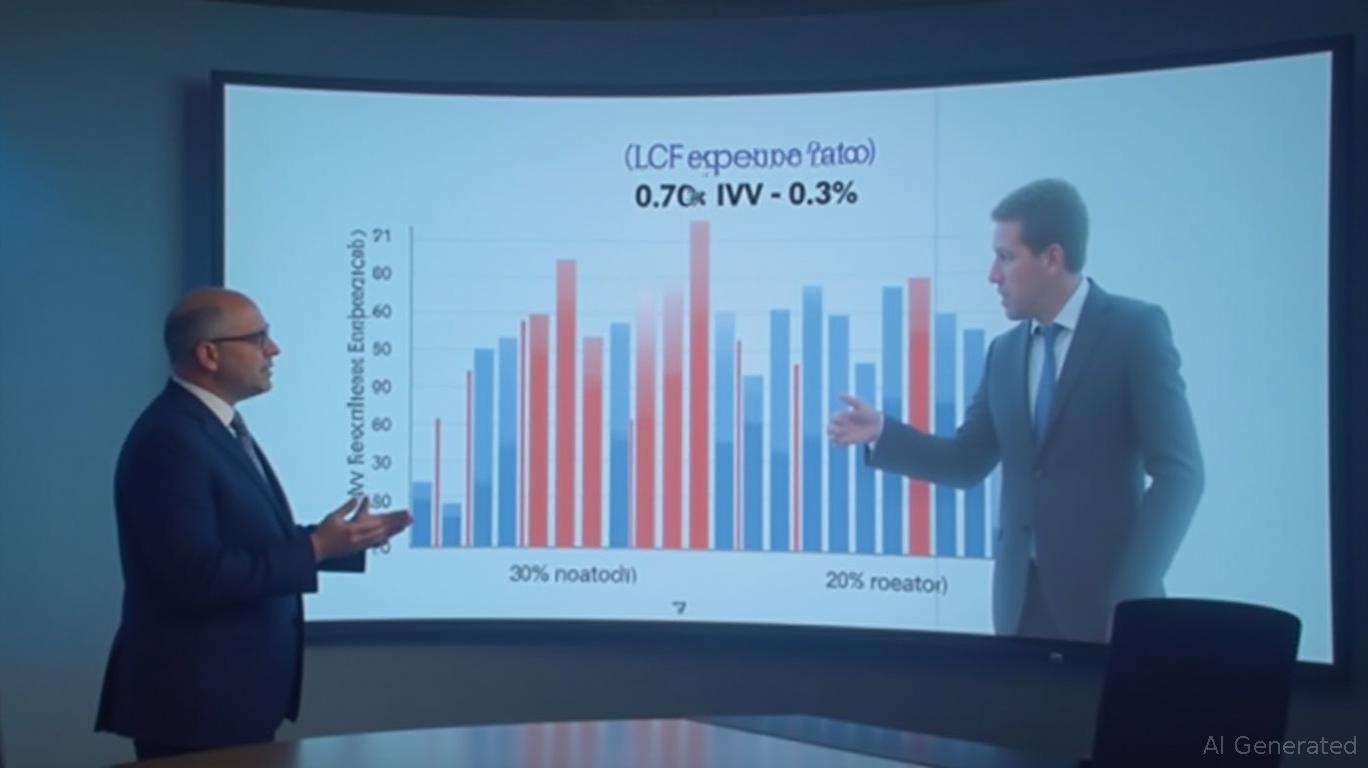High Fees Drag Down Touchstone LCF: Why Lower-Cost Alternatives Shine in Large-Cap ETFs
The Touchstone US Large Cap Focused ETF (LCF) positions itself as a concentrated growth vehicle, targeting 25–45 undervalued large-cap stocks to outpace the S&P 500. Yet its 0.70% expense ratio—nearly 23 times higher than the iShares S&P 500 ETF (IVV) at 0.03%—creates a significant hurdle for investors. While active management can theoretically deliver alpha, LCF's fee
erodes returns and raises critical questions about its value proposition.The Fee Factor: A Math Problem Investors Can't Ignore

High fees are a silent killer of long-term returns. Consider this: A $100,000 investment in LCF with a 0.70% fee versus IVV's 0.03% would result in a $6,700 difference in net returns over 10 years, even if both produced identical gross returns. This math alone makes LCF's cost structure a red flag, especially given its underperformance relative to benchmarks like the S&P 500.
Underperformance and the Passive Benchmark
While LCF's 2025 year-to-date (YTD) performance data is not publicly disclosed, its historical track record offers clues. The S&P 500, which LCF aims to outperform, returned 2.20% YTD through June 2025 (as tracked by IVV). LCF's active strategy requires consistent outperformance to justify its fees, but its expense ratio before waivers (1.29%) suggests underlying costs are even higher.
Even if LCF matched the S&P 500's returns, its fees would still leave investors worse off than passive alternatives. For example, IVV's 10-year annualized return of 12.99%—net of fees—demonstrates how low costs amplify gains over time. Active ETFs like LCF must deliver at least 0.7% annual outperformance just to break even against IVV, a bar few funds consistently clear.
The Active Alternative: Better Value Exists
The ETF market offers cost-efficient active options that undercut LCF's pricing. Consider:
- First Trust Dorsey Wright Focus 5 ETF (FDG): At 0.55%, FDG uses quantitative strategies to pick 5 sectors for exposure, balancing active management with lower fees.
- Global X Robotics & Artificial Intelligence ETF (BOTZ): While sector-specific, its 0.65% fee highlights how even niche active strategies can avoid LCF's steep pricing.
Even among large-cap ETFs, iShares Edge MSCI Min Vol USA ETF (USMV) charges 0.15% for a low-volatility tilt—a smarter value proposition than LCF's concentrated growth approach.
Why LCF's Strategy Falls Short
LCF's concentrated portfolio (25–45 stocks) may offer growth potential, but its high fees negate the benefits of active stock-picking. The S&P 500's broad diversification, paired with IVV's minimal costs, provides a safer, cheaper baseline.
LCF's heavy tilt toward Information Technology (30.9%) and Communication Services (15.9%) could amplify risk if those sectors falter. The S&P 500, by contrast, offers a more balanced exposure, reducing reliance on specific sectors to outperform.
The Bottom Line: Investors Should Look Elsewhere
For large-cap exposure, LCF's 0.70% expense ratio is a non-starter. Passive ETFs like IVV (0.03%) or VOO (0.03%) deliver S&P 500 performance at a fraction of the cost. Active investors seeking targeted strategies should explore mid-tier options like FDG or USMV instead.
Until LCF reduces its fees or demonstrates sustained outperformance, it remains a high-cost, low-value proposition. In a market where fees matter most, cheaper alternatives win.
Investment Advice: Avoid LCF. Opt for low-cost index funds like IVV or explore active ETFs with fee structures closer to 0.50% or below. Diversification and cost control are the cornerstones of long-term success.

Comments
No comments yet